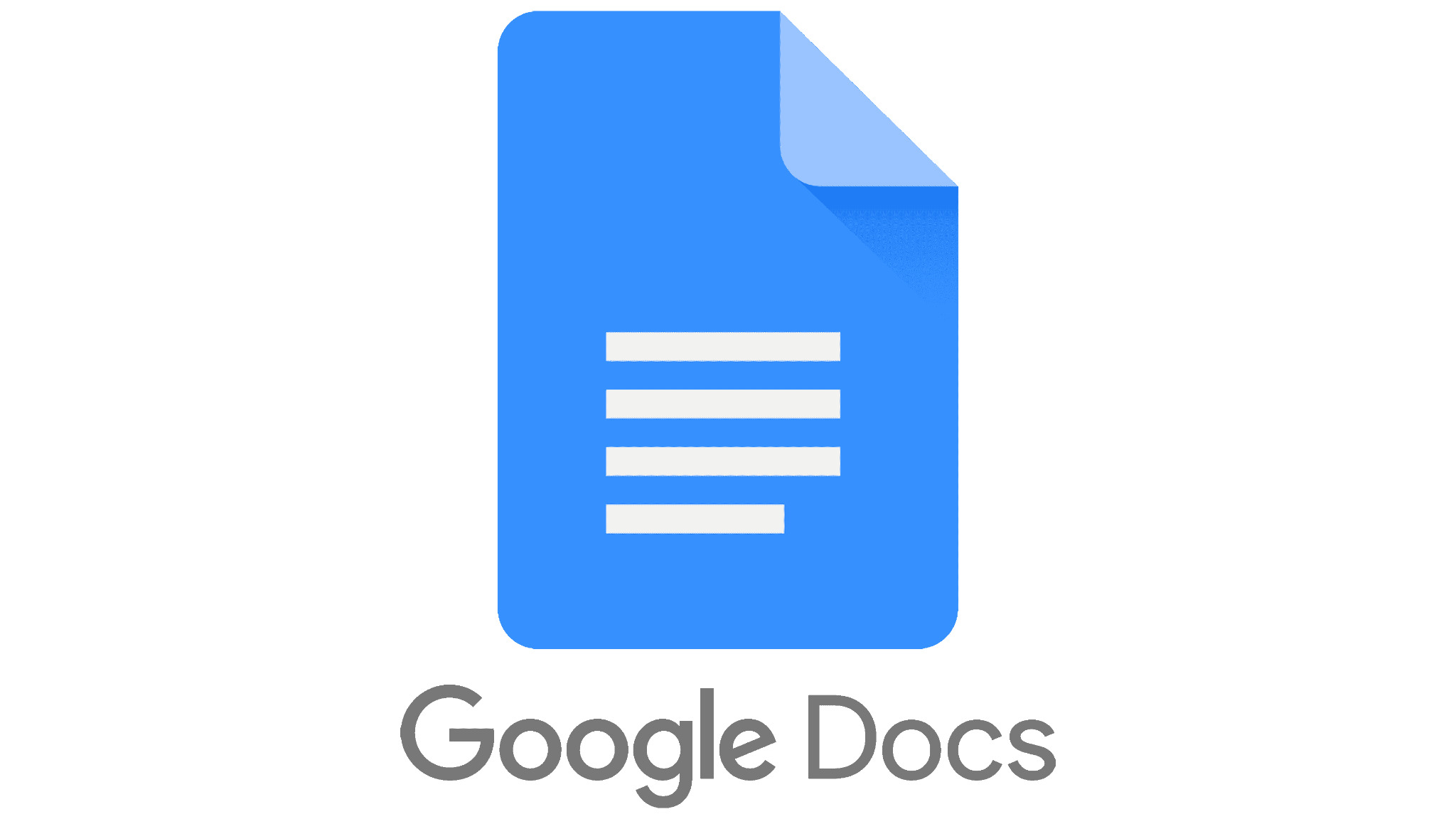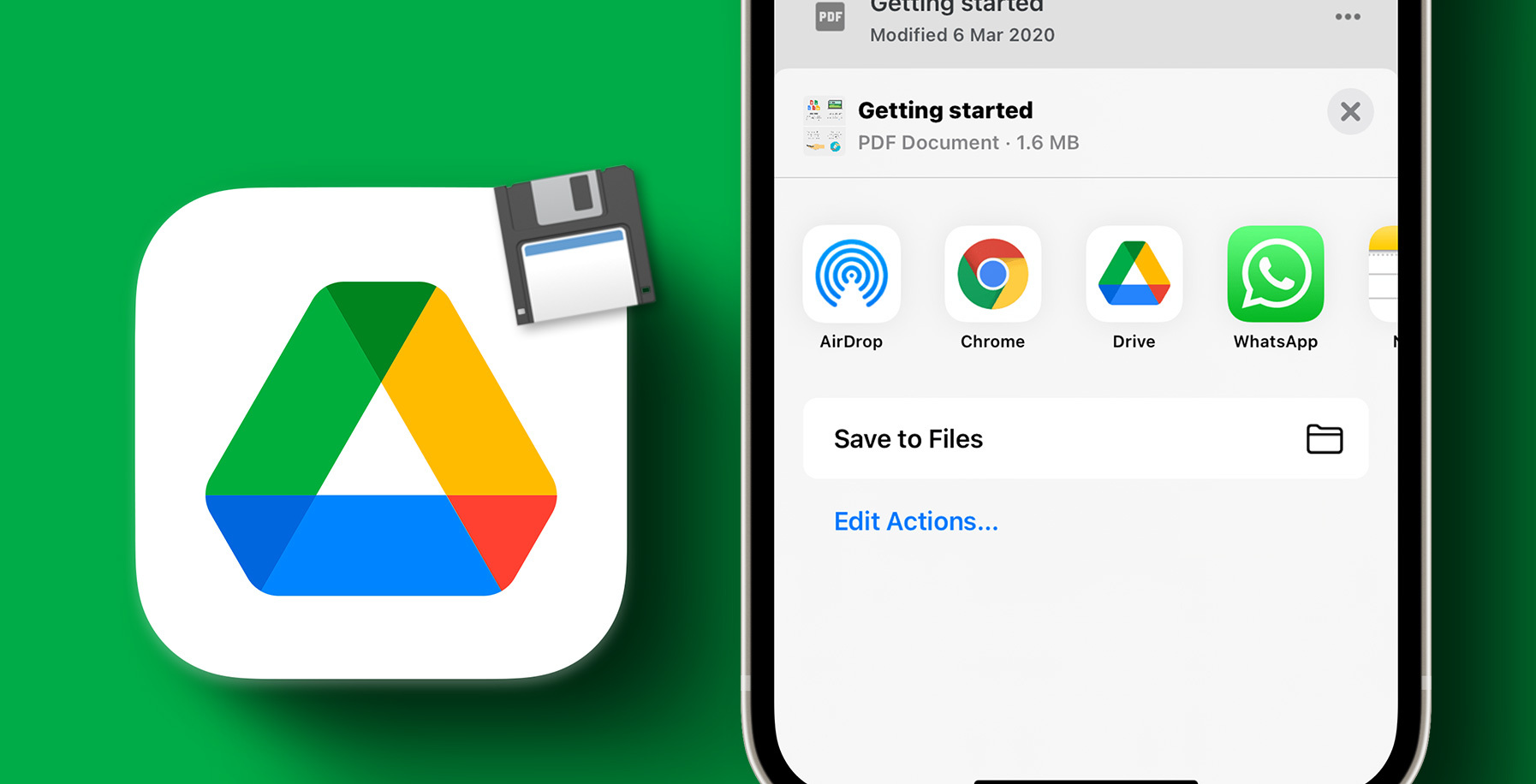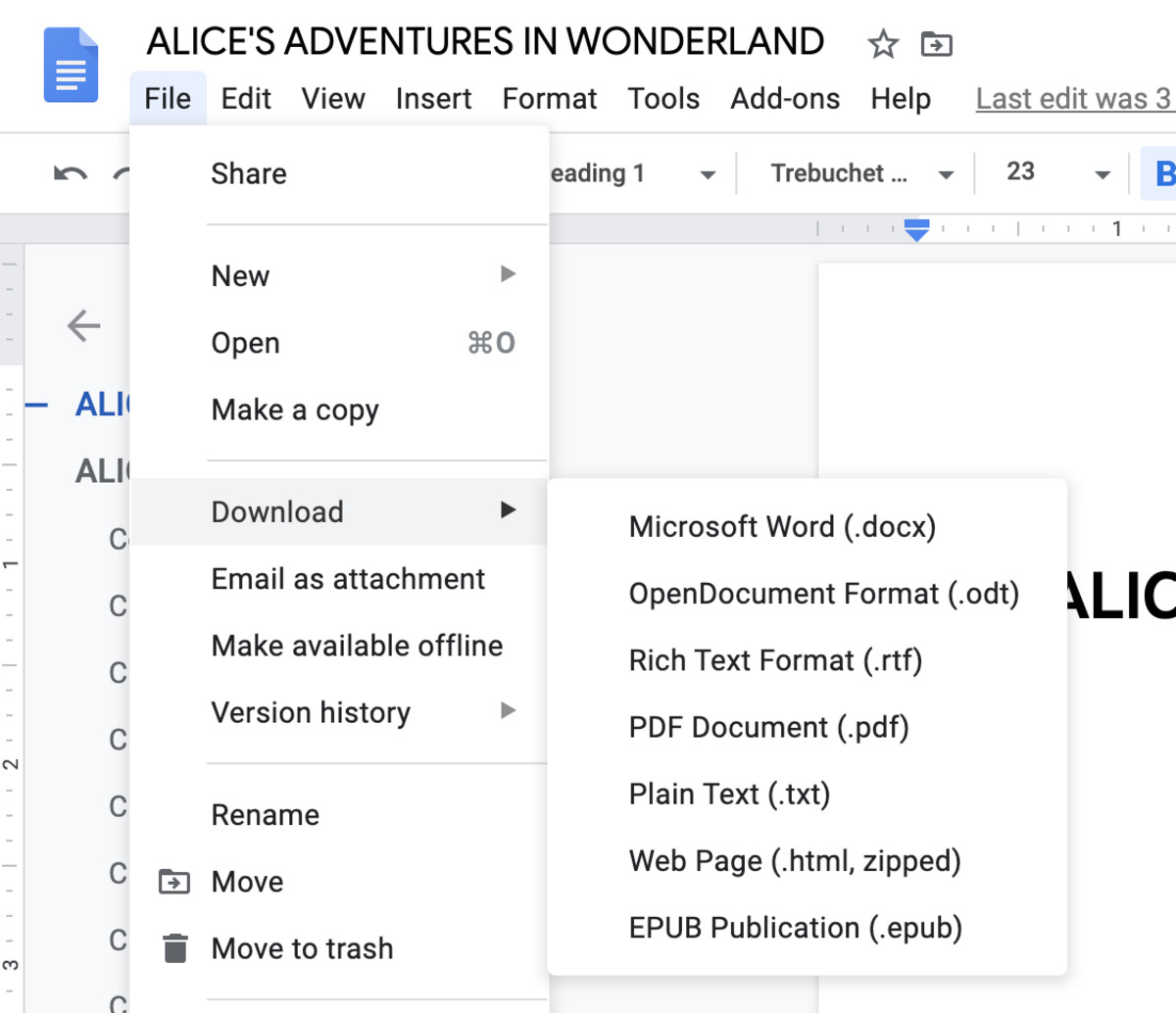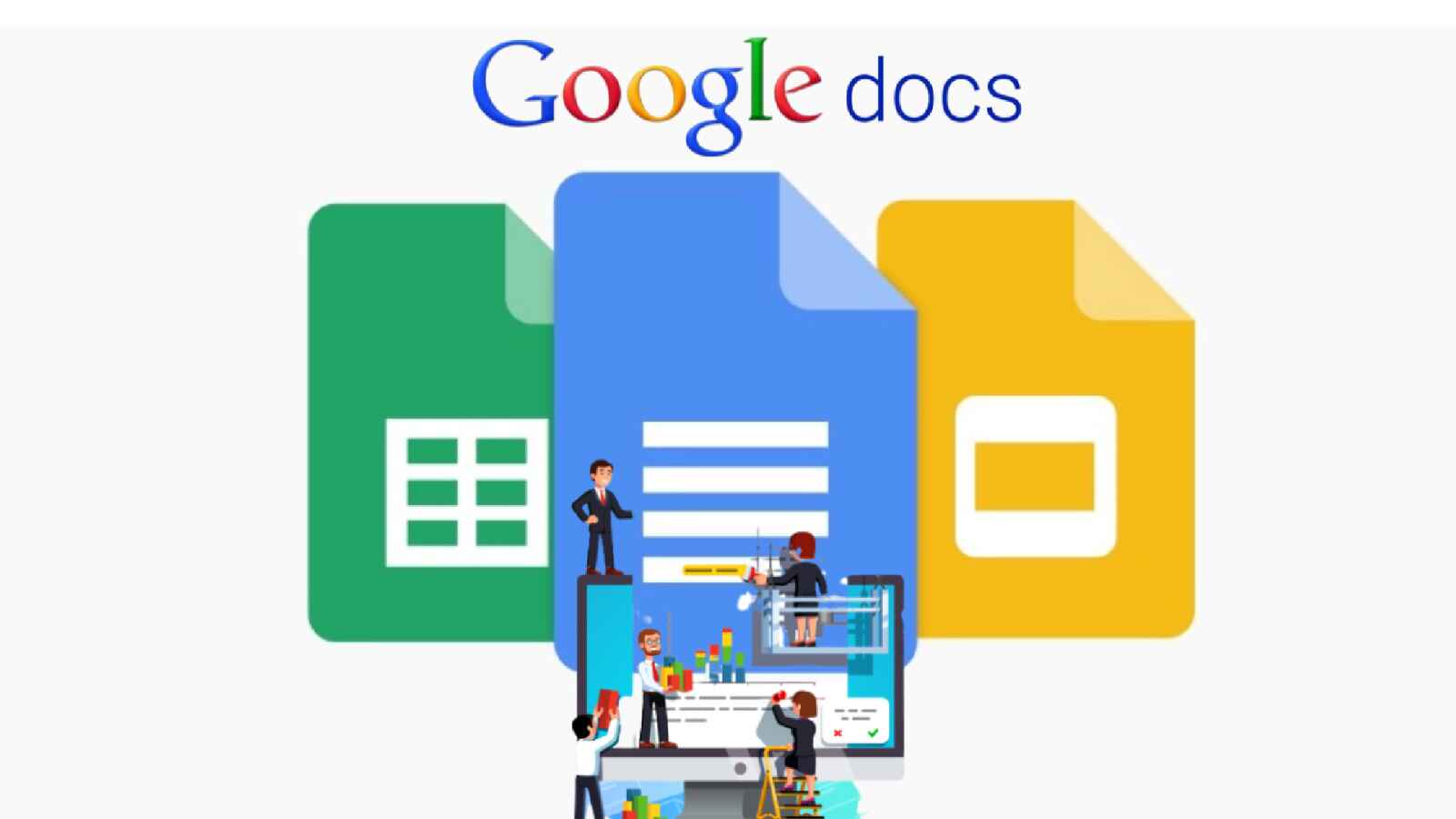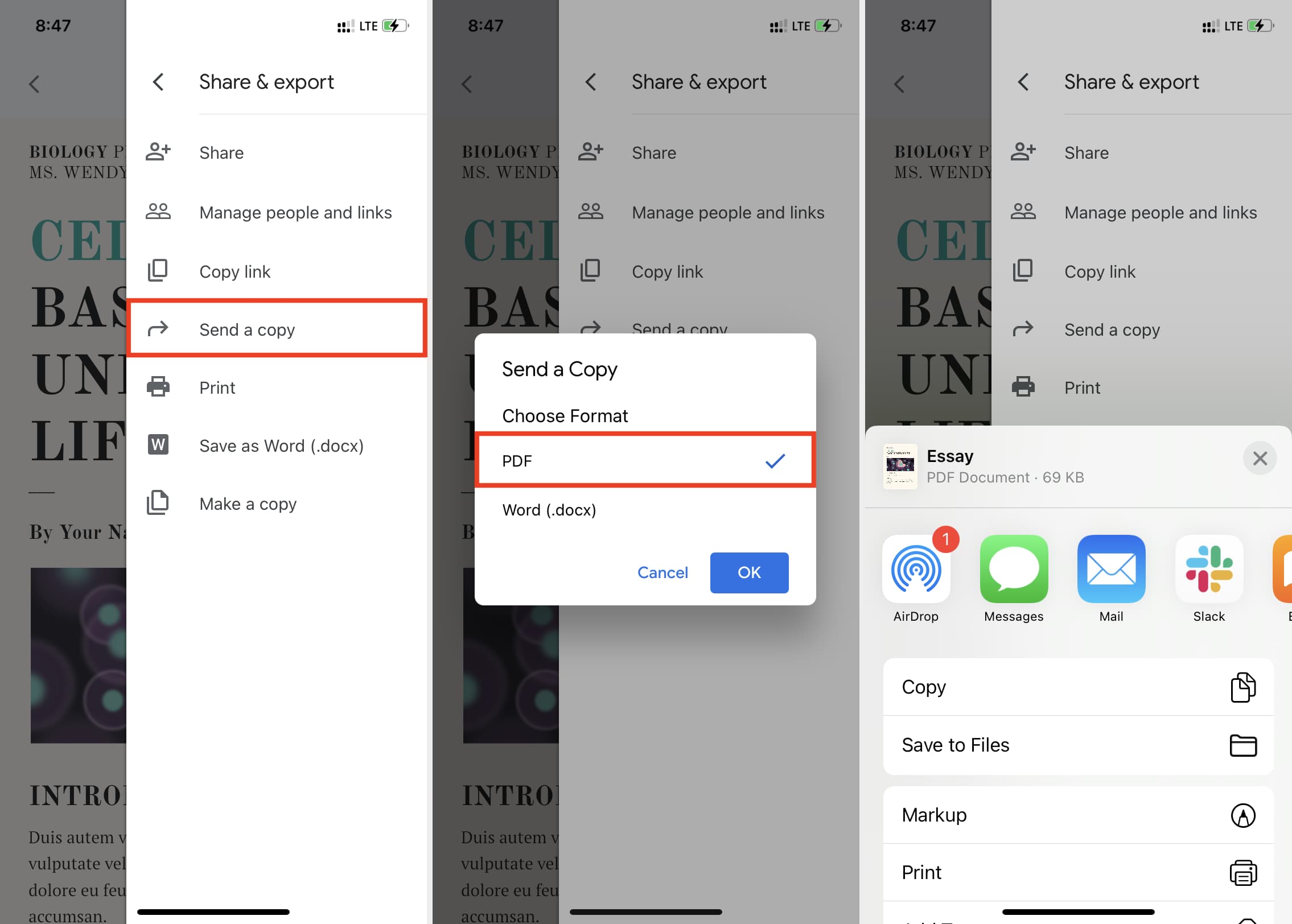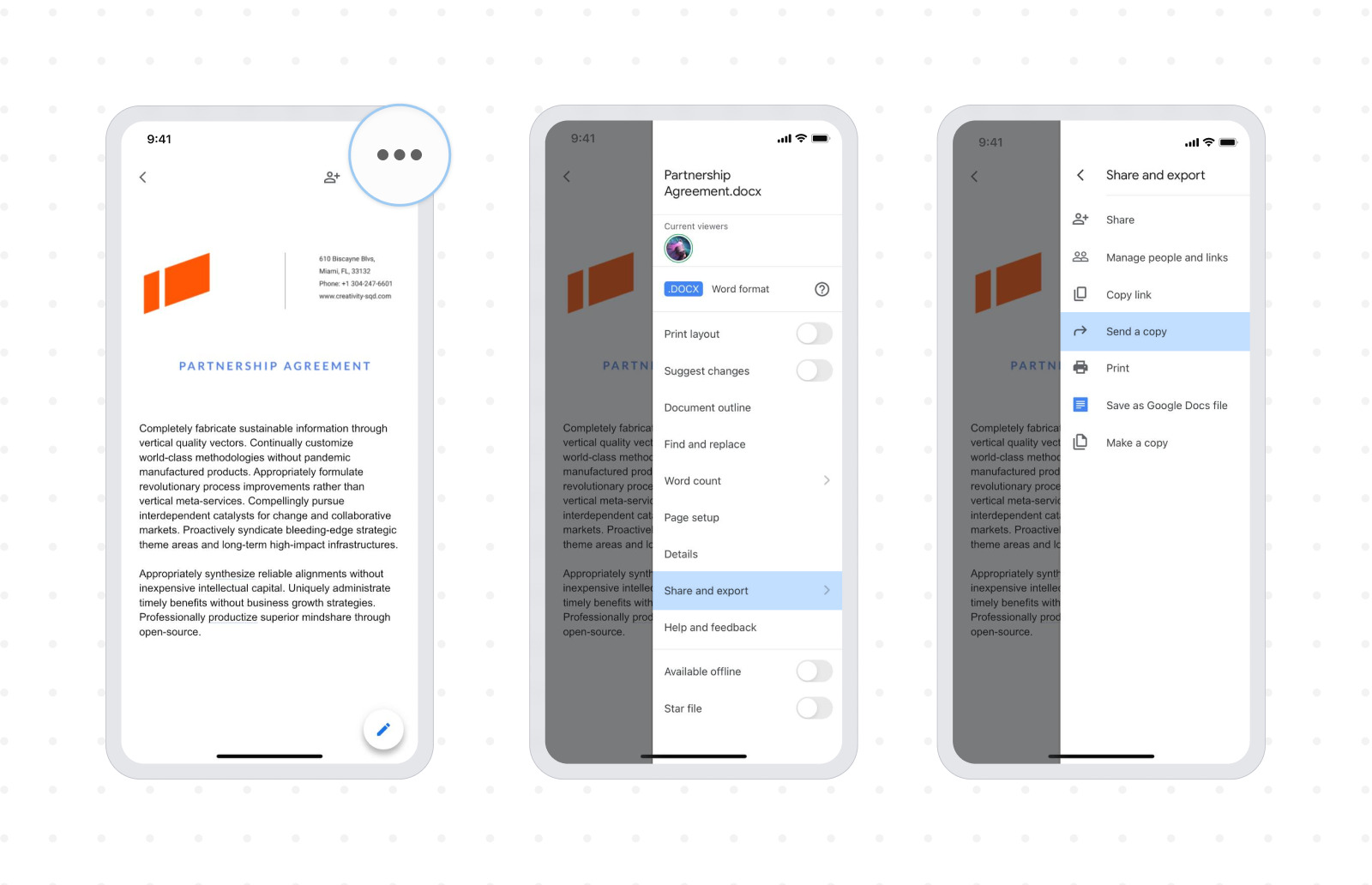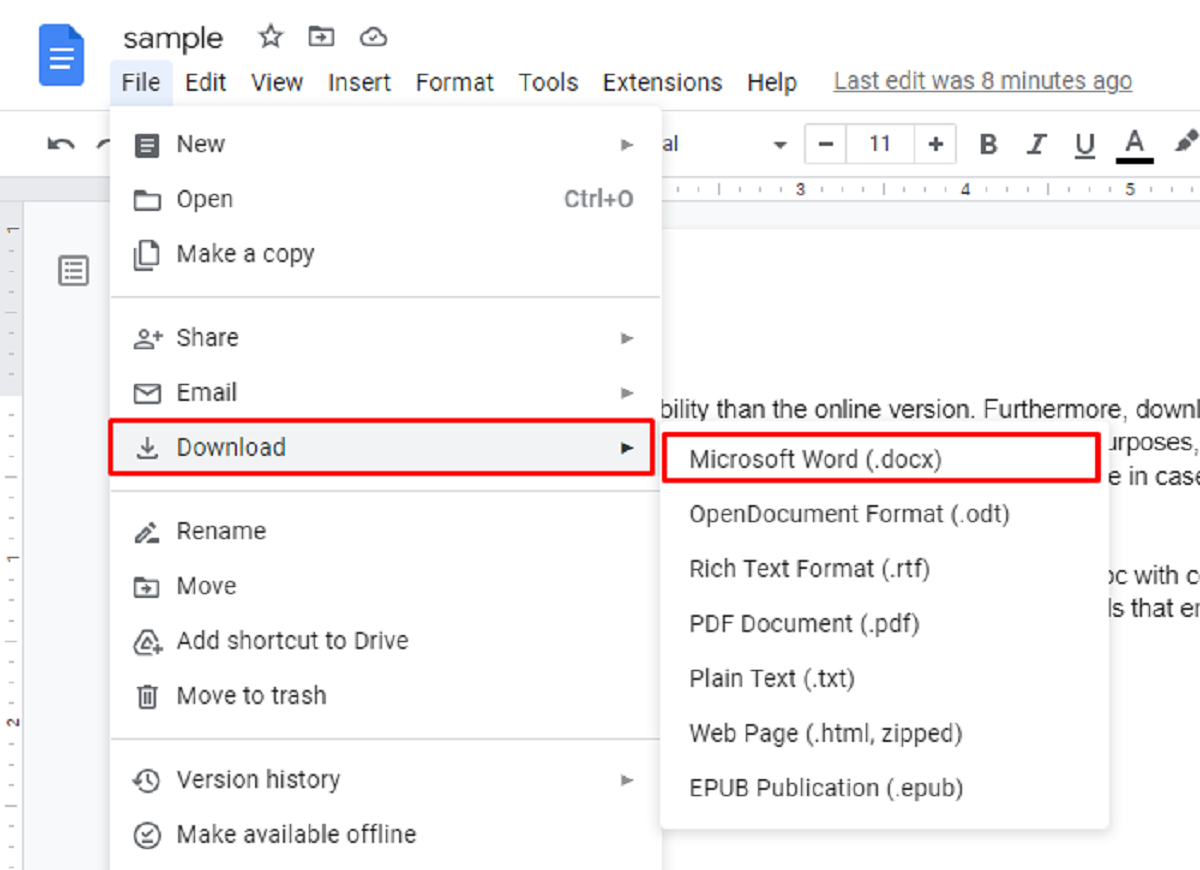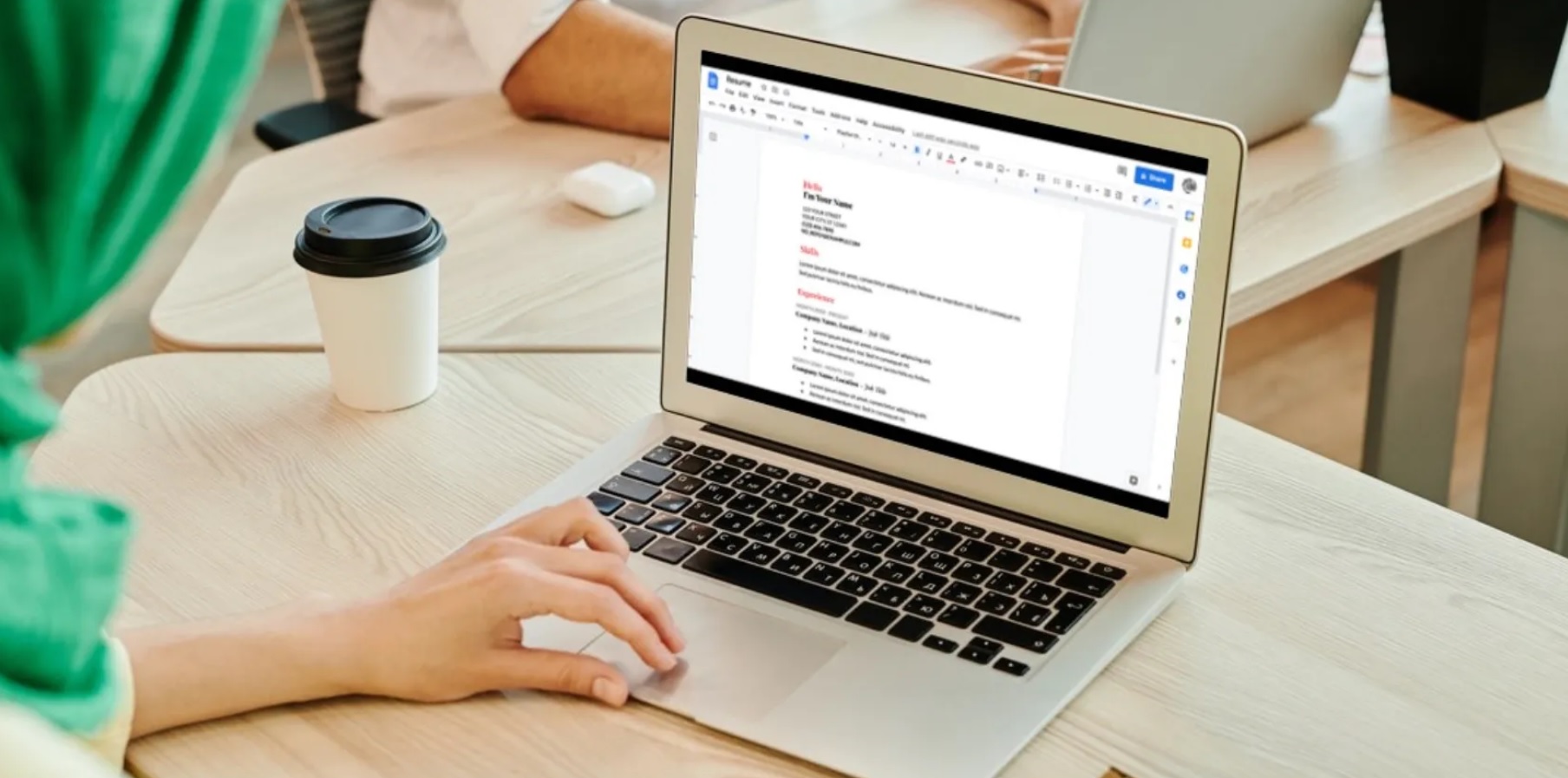Introduction
Google Docs has become one of the most popular cloud-based document editing and collaboration tools. With its user-friendly interface and seamless integration with Google Drive, it offers a convenient way to create, edit, and share documents online. However, there may be times when you need to download and save a Google Doc for offline access or to share it with someone who does not have access to Google Docs. In this article, we will explore various methods to download a Google Doc and save it in different file formats, ensuring that you can access your documents anytime, anywhere.
Whether you’re working on a professional project, academic assignment, or personal document, having the ability to download and save your Google Docs gives you the flexibility and freedom to work without an internet connection. We will walk you through several methods that you can use to download your Google Docs, each with its own advantages and use cases.
From downloading your Google Doc as a file to saving it as a PDF, Microsoft Word document, or plain text, we will cover various options so that you can choose the most suitable one for your needs. Additionally, we will explore how to export a Google Doc to a different file format, offering even more versatility.
Whether you are a professional, a student, or someone who simply needs to access their Google Docs offline, this guide will provide you with the necessary steps to download and save your documents in various formats. Let’s dive in and explore the different methods available to download your Google Docs!
Method 1: Download as File
One of the easiest and most straightforward methods to download a Google Doc is to save it as a file. This allows you to download the document in its original format, which can be opened and edited using compatible software on your device.
To download your Google Doc as a file, follow these steps:
- Open the Google Doc that you want to download.
- Click on the “File” menu at the top left corner of the window.
- From the drop-down menu, select “Download” and then choose the desired file format. Google Docs offers several options, such as Microsoft Word (.docx), OpenDocument Format (.odt), Plain Text (.txt), Rich Text Format (.rtf), and Web Page (.html).
- Once you’ve selected the desired format, a download prompt will appear. Choose the location on your device where you want to save the file and click “Save.”
By following these simple steps, you can save your Google Doc as a file and download it to your computer or mobile device for offline access. This method allows you to retain the original formatting and structure of the document, ensuring that you can view and edit it in compatible software without any issues.
This method is particularly useful if you need to work on your document using software that is not directly compatible with Google Docs. For example, if you want to make edits on a document using Microsoft Word or Apple Pages, downloading the Google Doc as a file makes it easy to open and work on it using these software applications.
Keep in mind that when you download a Google Doc as a file, it becomes a static document that won’t sync with any changes made to the original Google Doc. If you plan to continue collaborating or making updates to the document, it’s recommended to use one of the other methods described in this article.
Method 2: Download as PDF
If you want to preserve the formatting and layout of your Google Doc while also ensuring compatibility across different devices and platforms, downloading it as a PDF is a great option. PDFs are widely accepted and can be viewed on any device with a PDF reader, making it easy to share and distribute your document.
To download your Google Doc as a PDF, follow these steps:
- Open the Google Doc that you want to download.
- Click on the “File” menu at the top left corner of the window.
- From the drop-down menu, select “Download” and then choose “PDF Document (.pdf)”.
- Once you’ve selected the PDF format, a download prompt will appear. Choose the location on your device where you want to save the PDF and click “Save.”
By saving your Google Doc as a PDF, you ensure that the document retains its original formatting, including fonts, images, and page layout. This is especially important when sharing documents with others, as it ensures that the document will appear the same on their devices as it does on yours.
Downloading your Google Doc as a PDF is also beneficial when you need to print the document or submit it in a professional setting. PDF files are generally a preferred format for printing, as they maintain high-quality resolution and can be easily opened and printed from any device.
Additionally, downloading your Google Doc as a PDF allows you to add security measures to the document. You can password-protect the PDF or restrict certain actions such as copying, editing, or printing, ensuring that only authorized individuals can access and make changes to the document.
Remember that when you download your Google Doc as a PDF, it becomes a static document. Any changes made to the original Google Doc will not be reflected in the downloaded PDF. If you need to update the document, you would need to make the changes in Google Docs and then download it as a PDF again.
Method 3: Save as Microsoft Word
If you frequently collaborate with others who use Microsoft Word or if you prefer working with Word as your primary word processing software, saving your Google Doc as a Microsoft Word document (.docx) is an excellent choice. This allows for seamless compatibility between Google Docs and Microsoft Word, ensuring that you can continue working on your document without any compatibility issues.
To save your Google Doc as a Microsoft Word document, follow these steps:
- Open the Google Doc that you want to download.
- Click on the “File” menu at the top left corner of the window.
- From the drop-down menu, select “Download” and then choose “Microsoft Word (.docx)”.
- A download prompt will appear, allowing you to choose the location on your device where you want to save the Word document. Click “Save” to start the download.
By saving your Google Doc as a Microsoft Word document, it becomes fully compatible with the Word application. This means that you can open, edit, and format the document using all the features and tools available in Microsoft Word.
Saving your Google Doc as a Word document also allows for easier collaboration with others. Many people in professional environments prefer using Word as their primary word processing software, and by providing them with a Word document, you enable them to view and edit it without needing to convert or adapt the file.
It’s important to note that while most of the formatting and styles will be preserved when saving your Google Doc as a Word document, certain advanced features or complex formatting may not translate perfectly between the two platforms. It’s always a good idea to double-check the converted document to ensure that everything appears as intended.
Additionally, keep in mind that any changes made to the original Google Doc will not automatically sync with the downloaded Word document. If you make updates to the document, you would need to save it as a Word document again to reflect those changes.
By saving your Google Doc as a Microsoft Word document, you ensure seamless compatibility and open up more possibilities for collaboration and editing with the widely used Word application.
Method 4: Download as Plain Text
If you need to extract the content from your Google Doc without any formatting or styling, downloading it as plain text (.txt) is the ideal method. This allows you to obtain the raw text of the document, which can be used in various applications and platforms that do not support rich formatting.
To download your Google Doc as plain text, follow these steps:
- Open the Google Doc that you want to download.
- Click on the “File” menu at the top left corner of the window.
- From the drop-down menu, select “Download” and then choose “Plain Text (.txt)”.
- A download prompt will appear, prompting you to choose the location on your device where you want to save the plain text file. Click “Save” to start the download.
By saving your Google Doc as plain text, all formatting, such as fonts, colors, and styles, will be removed. This is useful when you need to extract the content from the document for further processing or when you want to ensure maximum compatibility across different platforms and applications.
Downloading your Google Doc as plain text can be particularly advantageous if you need to use the content for data analysis, import it into a database, or include it in a plain text email or messaging application. Plain text files are lightweight and can be easily opened and read on any device without requiring specialized software.
However, keep in mind that by saving your Google Doc as plain text, you will lose all formatting, such as headings, bullet points, and indentation. If you need to preserve the structure or any styling elements of the document, consider using one of the other methods described in this article.
It’s important to note that like other methods, when you download the Google Doc as plain text, it becomes a static document. Any changes made to the original Google Doc will not be reflected in the downloaded plain text file. To update the text file, you would need to download it again after making the necessary changes in Google Docs.
By downloading your Google Doc as plain text, you ensure the flexibility and compatibility of the content across various platforms and applications, making it easier to work with the raw text of your document.
Method 5: Export to a Different File Format
In addition to the standard download options, Google Docs offers the capability to export your documents to a wide range of file formats. This gives you the flexibility to choose a format that best suits your needs or the requirements of the recipient.
To export your Google Doc to a different file format, follow these steps:
- Open the Google Doc that you want to export.
- Click on the “File” menu at the top left corner of the window.
- Select “Download” and then choose “Export” from the drop-down menu.
- A new window will appear, displaying a list of file formats you can export to, such as EPUB (.epub), OpenDocument Format (.odt), Portable Document Format (.pdf), Rich Text Format (.rtf), and plain text (.txt).
- Select the desired file format and click “Export”.
By exporting your Google Doc to a different file format, you can tailor the document to specific use cases and requirements. Let’s explore a few of the notable export options:
- EPUB (.epub): Exporting to EPUB format allows you to create an electronic publication that can be read on various e-reader devices and applications.
- OpenDocument Format (.odt): This format is compatible with open-source word processing software, such as LibreOffice and Apache OpenOffice.
- Portable Document Format (.pdf): Exporting to PDF ensures that the document retains its formatting and can be viewed on virtually any device with a PDF reader.
- Rich Text Format (.rtf): RTF files are widely supported across different word processing applications and can be easily shared and edited.
- Plain Text (.txt): Exporting to plain text removes all formatting, providing you with clean, unstyled text that can be used in various applications and platforms.
By exporting your Google Doc to a different file format, you can ensure compatibility with specific software applications, achieve a desired level of portability, or cater to the preferences of the recipient.
It’s important to note that, similar to other download methods, the exported file becomes a static document. Any changes made to the original Google Doc will not be reflected in the exported file. If you need to update the document, you would need to make the changes in Google Docs and then export it again in the desired format.
By utilizing the export feature in Google Docs, you have the flexibility to choose alternative file formats to suit your needs and optimize the accessibility and compatibility of your documents.
Conclusion
Downloading and saving your Google Docs in different file formats provides you with flexibility and convenience in accessing, sharing, and editing your documents. Whether you need to work offline, collaborate with others who use different software, or simply prefer a specific file format, Google Docs offers several methods to meet your requirements.
By downloading your Google Doc as a file, you can preserve the original formatting and structure of the document, making it compatible with software on your device. Saving it as a PDF ensures that the formatting and layout are maintained, while also allowing for easy printing and professional distribution. Saving as a Microsoft Word document enables seamless collaboration and editing with Word users, while saving as plain text extracts the raw content without any formatting or styling.
In addition to these methods, Google Docs also offers the option to export your documents to a variety of file formats, including EPUB, OpenDocument Format, Rich Text Format, and plain text. This allows you to cater to specific use cases or software requirements.
It’s important to note that when you download or export a Google Doc, the resulting file becomes a static document. Any updates or changes made to the original Google Doc will not be reflected in the downloaded or exported file. To ensure that you have the latest version of your document, it’s necessary to download or export it again after making the desired changes.
By understanding and utilizing the various methods available to download and save your Google Docs, you can enhance your productivity and flexibility in working with your documents. Whether you’re a professional, a student, or simply someone who wants to have offline access to their documents, Google Docs provides you with the tools to easily download and save your files in a format that best suits your needs.







